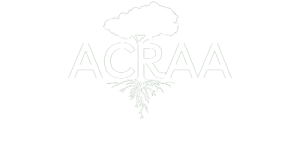The Ilha do Amor and the Beaches of Alter do Chão
This page provides some background related to the Ilha do Amor and the ecological problems this area is facing.
First, the Ilha do Amor is not an island but a peninsula of sand, with the Tapajós river on one side and Lago Verde (Green Lake) on the other. This formation is also actally a dune, sands transported by wind from beaches to the north-west and north-east during periods of low water, and deposited here.
As is the case for rivers throughout the Amazon, there is a large annual fluctuation in the water level here. As a result, during the period of lower water levels (September to December which is the dry season), large expanses of sandy beaches are present. However, when the water level is high (late February-May during the rainy season), much of this peninsula is submerged. Photos 1 and 2 show this variability. See links to photo sources below (other than ACRAA photos).
Access to the Ilha do Amor is provided by a flotilla of small canoes, a short five-minute crossing that adds greatly to the romanticism of this magical place (Photo 3). Once there you can dine at one of the “barracas,” these small thatched-roof restaurants specializing in locally caught grilled fish, and of course cold beer.
Each of these barracas is owned and operated by a family of the indigenous Borari community in Alter do Chão. The first barraca, and the one nearest to the end of the peninsula, was built by Neca Borari – who is now the Chief of this community. This group of restaurant owners has formed an association, The Association of Barraqueiros – with Evandro da Silva Ferreira the current president.

Sandy beaches surround Alter do Chão and much of the shoreline along the Tapajós river here, these derived from the ancient and deep sand deposits in the region. These shoreline areas form a unique biological zone –trees that live here must be adapted to survive weeks or months of inundation each year (we refer to this area as the “Inundation Zone”).
On the Ilha do Amor there are a variety of native tree species growing. We will highlight one of these, a species known locally as Cumandá – as this is the first we have propagated and planted.[1] Cumandá is one of the most common trees in the Inundation Zone and is seen in the lowest elevation areas where trees are able to grow. This tree is also within the Leguminosae family and therefore able to fix atmospheric nitrogen – important in these nutrient poor sands.
The seed of Cumandá matures in February/March, at which time the pods dry and split open dropping their seeds onto the beach, or often directly into the water – as the river level is rising rapidly during this period. The large disk-shaped seeds float well, this clearly a dispersion strategy for this species. Photos 4 to 7.
[1] Note that we have now succeeded in propagating and growing the seed fifteen others.
Although still spectacularly beautiful, environmental degradation is occuring on the Ilha do Amor. This is in two main forms: 1) A gradual loss of tree cover, and 2) Erosion/loss of sand, mostly from higher areas nearer to the end of the peninsular, leaving tree roots exposed and resulting in some trees toppling over. These problems are interconnected, vegetation cover being necessary to slow wind velocities resulting in the deposition of sand on the peninsula, and its roots playing an important soil stabilizing role. As a reference, Photos 8 and 9 show the peninsula 80 years ago, and today.
Loss of tree cover on the Ilha do Amor
The Ilha do Amor is gradually losing it’s cover of trees (Photos 10 to 15). This is not surprizing given the very heavy tourist use here, preventing natural regeneration of young trees from occurring. At the extreme, before the pandemic, up to 100,000 visitors came here during a one-week period each year – for the 300-year-old Festival do Sairé. See here.
A number of the barraca owners, along with the Association of Barraqueiros, have been planting trees on the Ilha do Amor over the years to improve the situation. In many cases the species planted are ones native to the peninsula, but in other cases not. ACRAA too, working with Neca Borari, planted our first Comandá here in February 2022.
However more needs to be done in an integrated and coordinated approach. It is ACRAA’s goal to work with the Borari community and the Association of Barraqueiros, along with local government officials and environmental professionals – and providing our planting stock – to affect a thorough restoration of tree cover on the Ilha do Amor using only the peninsula’s existing native species. [2]
[2] All the planting stock produced by ACRAA to restore tree cover on the Ilha do Amor and other beaches around Alter do Chão are grown from seeds of native tree species in the “Inundation Zone” of these and other nearby beaches.
Erosion/Loss of Sand
Residents of Alter do Chão old enough to remember recount as children how, many years ago, they could “roll down” the sandy slopes on the Ilha do Amor.[3] However, over the past few decades there has been extensive erosion of sand from some areas, including in some places, as evidenced by the exposed roots of older trees, a meter of more of sand having been lost. If this trend continues, and it likely will without restoration of tree and shrub cover – one can only imagine where the peninsula will be in a few years – likely on its way to being lost. Photos 16 to 19.
But for ACRAA to continue developing and carrying out this and other projects, we need your contribution. Click on the “Donate” link above to collaborate with us.
[3] This recounted by an elderly Alter do Chão resident at one of our planting events.
MORE GREEN, MORE LIFE
